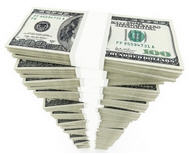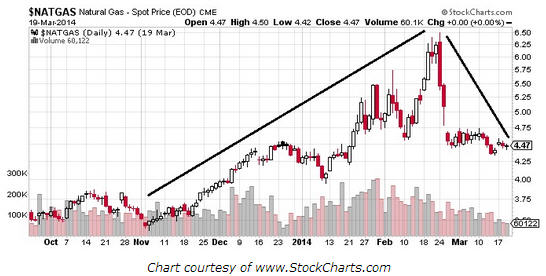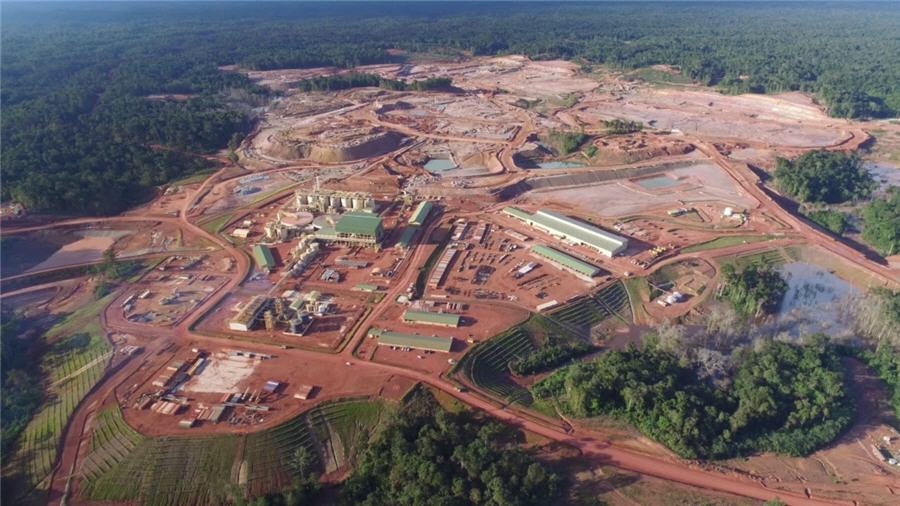Why major profits could be ahead for investors in natural gas
 One of the most important investing lessons I have learned over time is to be careful when the price of an asset goes up significantly in a very short period of time—it usually doesn’t end well. Prices increasing very quickly tell me that speculators are entering and they are buying at whatever price the stock may be at the time; it shows irrationality. It’s all about short-term profit—making the quickest bucks in the shortest period of time and leaving.
One of the most important investing lessons I have learned over time is to be careful when the price of an asset goes up significantly in a very short period of time—it usually doesn’t end well. Prices increasing very quickly tell me that speculators are entering and they are buying at whatever price the stock may be at the time; it shows irrationality. It’s all about short-term profit—making the quickest bucks in the shortest period of time and leaving.
When I look at natural gas prices, this is exactly what has happened. Please take a look at the chart below of daily prices and how it has been a rollercoaster ride for investors in this commodity recently.
In late November, natural gas was trading below $3.75. By the end of December, the prices jumped about 19% and surpassed $4.50. Then they declined for a bit in January. From mid-January to the end of February, they soared significantly higher; we are talking about a gain of 50% in just about 28 trading days.
From there, prices have been declining.
As I have stated in these pages before, I am bullish on natural gas in the long run. My reasoning for this: when prices are low, producers don’t have much incentive to produce more. This creates significant supply problems over time. With a growing reliance on natural gas, the supply problem could get even bigger.
One of the reasons that prices soared between January and February was a short-term supply concern. In cold weather, natural gas is used to heat up homes and factories. With the U.S. and Canada getting hit with a few major storms earlier this year, demand for natural gas for heating grew exponentially. So, the consensus became “buy natural gas” and speculators rushed in. A speculative pop then occurred and realization hit; investors realized the increase wasn’t sustainable.
Should you be worried about the long-term perspective of natural gas?
I certainly am not. Long-term investors have to keep one important phenomenon in mind: assets sometimes go through a period of massive speculation, but then speculators eventually run out.
The fundamentals haven’t changed.
If natural gas continues to trade the way I expect, in the next few years, investors could profit heavily. They may consider exchange-traded funds (ETFs), such as the United States Natural Gas (NYSEArca/UNG) ETF, as one way to profit from it.
But some words of caution: now that natural gas prices are coming down after seeing a speculative pop, you want to be careful. They are finding support around the $4.50 area for now, but don’t be surprised if they break below. It is also interesting to note that as the prices came down from their peaks above $6.00, we saw volume decline. This means there weren’t many sellers, which can be potentially bullish.
By Moe Zulfiqar
More News
{{ commodity.name }}
{{ post.title }}
{{ post.date }}


Comments